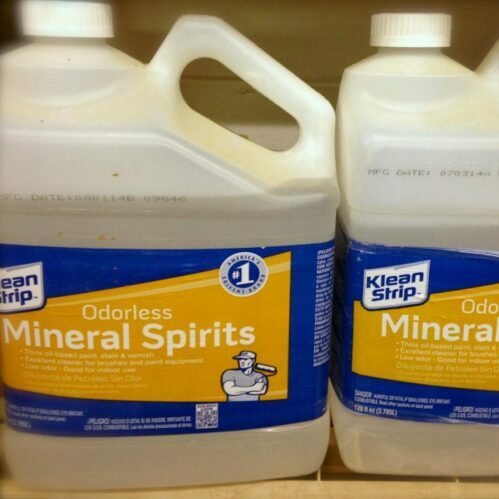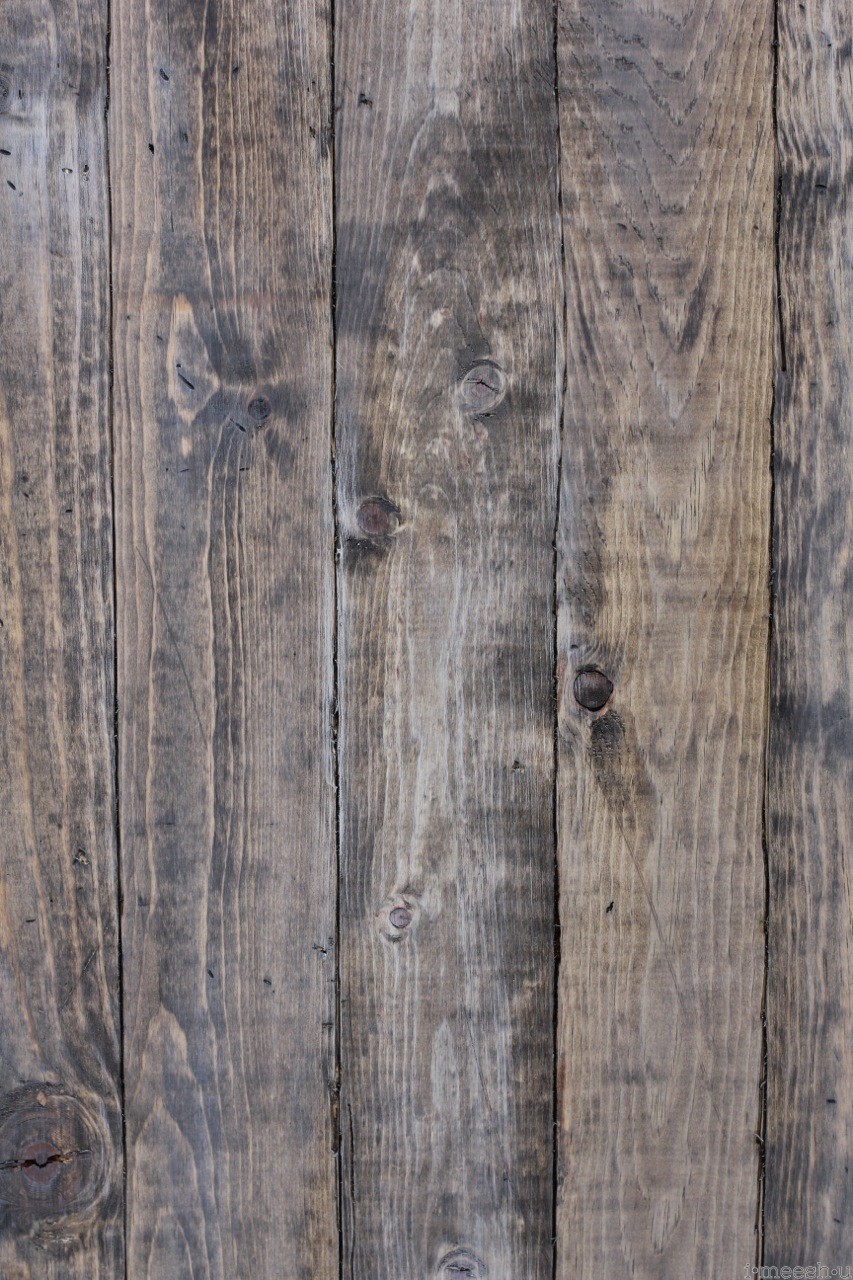Brush up on the differences between these two oft-confused solvents before tackling your next painting to-do.
Less abrasive to brushes than turpentine or mineral spirits, Chelsea Classical Studio Lavender Brush Cleaner is made from natural oil essences of fruit, flowers, and lavender and boasts a pleasant, naturally floral aroma. This extremely effective brush cleaning solution is gentle on brush hairs, resulting in longer brush life. Cleaning oil-based finishes from a brush requires solvents and a little more time than water-based finishes. Pour about a quarter-inch of mineral spirits into a glass or plastic container. Then push the bristles into the liquid–fully wetting them up to the ferrule–and work the brush around to remove as much paint as you can. Mineral spirits are often used as a paint thinner, or as a component thereof, though paint thinner is a broader category of solvent. Odorless mineral spirits (OMS) have been refined to remove the more toxic aromatic compounds, and are recommended for applications such as oil painting. Klean-Strip® Odorless Mineral Spirits is a premium, highly refined solvent formula that effectively thins and blends well into oil-based paint, stain and varnish. It is very low odor, dries with minimal residue and is an excellent cleaner for brushes and paint equipment. Cleaning oil-based paints, varnishes, lacquers and shellacs from your paint brush. Closely follow the manufacturer's instructions to select the proper cleaning solvent (mineral spirits or paint thinner for paint and varnish, denatured alcohol for shellac, etc.). Pour the solvent into a container and dip the paint brush into the solvent.
Photos: homedepot.com
You might have found the perfect color, but what about the right consistency? Paint’s thickness—or, rather, thinness—is key to a perfect application. Whether you need to thin oil-based paint to pour into a spray gun or to brush on thin and even coats, mineral spirits and paint thinners are two clear, petroleum-derived liquids up to the task. Plus, they come in handy at the end of a paint job when removing this paint from brushes or rollers.
But while the solvents look the same and can be used somewhat interchangeably (after all, you can use mineral spirits as a paint thinner), they’re not synonymous. In fact, they vary considerably when it comes to toxicity, odor, cost, and efficacy for various applications. To clear up the confusion, keep reading for an in-depth comparison of the two solvents, mineral spirits vs. paint thinner. These five key differences will help you decide which product to enlist for your next paint project.
Mineral spirits are less toxic.
Both mineral spirits and paint thinner are created through the distillation of petroleum, but mineral spirits are heavily refined during production to reduce toxic volatile organic compounds (VOCs) and sulfur. In the case of odor-free mineral spirits, which are readily available in home centers, these toxic compounds have been completely eliminated! These solvents allow homeowners with kids or pets to rest easy knowing they aren’t introducing as many harmful pollutants into the home during paint projects. Paint thinner, on the other hand, is minimally refined during production, resulting in a solvent that retains most of its original toxic VOCs like toluene and benzene.
Mineral spirits are less smelly.
While mineral spirits and paint thinner both emit an unpleasant kerosene-like odor due to the VOCs they contain, the lower VOC content in mineral spirits means its odor is less potent (or nonexistent in the case of odor-free mineral spirits). Meanwhile, paint thinner comes with a more noxious odor that takes a while to air out. Smelly or not, do-it-yourselfers should wear a respirator and work in a well-ventilated area when handling either solvent since the fumes emitted by each can negatively affect respiratory health if inhaled in high enough concentrations.

Photo: istockphoto.com
Paint thinner is cheaper.
A gallon of mineral spirits goes for $10 on average, and odor-free mineral spirits costs on the order of $15 per gallon—nearly double the cost of paint thinner at a mere $8 per gallon. Mineral spirits require extra energy to purify and achieve s more refined content, accounting for its higher average cost. Meanwhile, the less labor-intensive production process for paint thinner turns out a less refined composition at a lower cost. Now, that cost differential may seem significant at first blush, but it’s minimal in the scheme of things. Cleaning paintbrushes or thinning paint for a furniture refresh typically requires no more than four to six ounces of solvent, so you shouldn’t need to purchase either mineral spirits or paint thinner in bulk amounts or very frequently. So, the higher cost of odor-free mineral spirits may be worth it if optimal indoor air quality is a priority for you.
Mineral spirits are more effective.
It’s true that both mineral spirits and paint thinners can be used to dissolve paint from brushes or rollers (simply soak the painting utensil directly in the solvent*) or to thin overly viscous paint (mix directly into the paint in the ratio of one part solvent per three parts paint). But here, too, mineral spirits is more desirable. It boasts a slower rate of evaporation; paint thinned with mineral spirits dries into a slightly smoother, more level coat on surfaces than paint thinned with faster-evaporating paint thinner.
* Keep in mind that, regardless of which solvent is used, the paint should still be fresh or wet when these solvents are applied for cleaning purposes; the effect of both diminishes once the paint has dried on a brush or roller.
Mineral Foundation Brush
Mineral spirits are a more versatile all-around cleaner.
The purity and low toxicity of mineral spirits allow it to expand its role well well beyond a small paint job. Mineral spirits can be used to remove paint as well as oils, tar, or gunk from larger surface areas: like garden shears and saws, metal and wood worktops, and even concrete floors. While paint thinner, too, can be applied to metal, wood, or concrete without damaging it, its higher toxicity and its emission of more noxious fumes make it unsuitable for use as a cleaner for large surface areas—best to save it for spot treatments.


Photo: istockphoto.com
Neither is suitable for latex paint applications.
Mineral spirits and traditional paint thinners are solvent-based (not water-based) and therefore intended for use only with oil-based paints. Using either to thin or clean off water-based latex paint might separate the paint pigment from the paint solvents during a thinning application or fail to dissolve it from utensils during a cleaning application. When thinning or cleaning tools covered in latex paint, you should instead use plain water or a specially-formulated latex-based paint thinner (e.g. Thin-X Latex Paint Thinner).
Follow these simple steps to properly clean paint brushes after your next do-it-yourself project.
Photo: istockphoto.com
Cleaning A Paint Brush With Mineral Spirits Youtube
An investment in high-quality paint brushes is wasted if they are not properly cleaned and stored after use. Indeed, rushing through the end of a paint job can leave you with flecks of paint in your brushes—which will lead to an imperfect finish on your next project—as well as misshapen bristles. So invest the extra two minutes it takes to do the job right and follow this guide on how to clean paint brushes.

MATERIALS AND TOOLS Available on Amazon
– Newspapers
– Mineral spirits
– Turpentine
– Mild liquid dish soap
– Small plastic buckets
– Paint brush and roller spinner
– Rags
The Right Way to Clean Paint Brushes
Photo: istockphoto.com
- Use up what paint remains on your brush on whatever you are painting.
Press the bristles against the inside of the paint can, and lift it up and out as you do—that will squeeze out more paint. Paint away the rest on newspapers, because cleaning a brush is made easier if you remove as much of the paint from its bristles as possible. - Next, examine the can of paint, and use the appropriate solvent.
The right solvent makes the job easy by loosening dried paint, but the wrong one will probably be no help at all. Fill a small bucket with one of the following depending on the type of paint you’ve used:- Mineral spirits or turpentine to remove oil-based paint
- Hot water and mild liquid dish soap to clean paint brushes that have been used to apply latex paint
- Immerse the paint brush in the solvent.
Stir the solvent with the brush for about 10 seconds, wiping and squeezing the bristles on the sides of the container. Work the bristles between your fingers, and run a brush comb through them to remove excess paint without damaging the bristles. If some of the paint has begun to dry on the brush, soaking the brush may be necessary. - Wash it in warm soapy water in a utility sink or bucket.
Once the paint has been removed from the brush, warm soapy water will clean the brush of the solvent and remaining paint. - Shake or spin the paintbrushes dry.
Before you store your paint brushes, you’ll want to remove all of the water from their bristles. Many DIYers will do so by shaking the brush at the top of a bucket and then blotting the brush dry with a clean rag or newspaper.But, for those that have plans to do a lot of painting and wish to preserve their tools, a brush and roller spinner will come in handy. This dual-purpose tool will speed-dry either type of paint applicators using centrifugal force. Just attach a paint brush to the bottom of the tool, then pump the top several times to spin it and fling all water off the business end of the brush.
- When storing paint brushes, hang them up or lay them flat.
Hanging paint tools from a pegboard in your workshop or craft room is not only a great organizational method, but it ensures that the brush’s bristles don’t get bent out of shape stuffed in a bin somewhere. Replace the packaging on your paint brush to maintain its form and prolong its useful lifespan.
Photo: istockphoto.com
